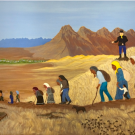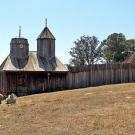Ishi’s Legacy and Repatriation
HSS 4.2, HSS 5.3, W.4.2Students will learn about the repatriation of Ishi’s remains and its importance to his community. Students will understand the concept of repatriation, sacred traditions, and respect for cultural practices. Students will reflect on Ishi’s legacy and how it influences modern understanding of cultural respect and human rights.This lesson plan helps students critically analyze historical narratives, develop empathy, and practice respectful communication in their writing.


